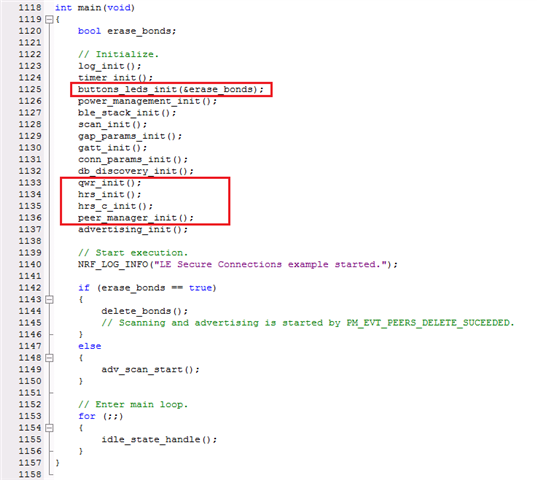Hello Nordic engineer,
I use SDK15.3.0 and Keil
52811 have ROM 192K and RAM 24K
Questions 1:I'd like to know how much RAM and ROM does softdevice(BLE) occupy?
Questions 2:In SDK example, If a certain example doesn't have "p10056e," how many steps do I need to take to go from p10056 to p10056e?

Is there anything else I might have missed?
Questions 3:If I want to achieve functionality similar to that of "ble_app_uart," but it's necessary to have both center and peripheral roles, I looked at "ble_app_multirole_lesc." In the diagram below, can the highlighted section within the red box be removed?

《peer_manager_init()》I don't need to record the previous connection information. Also, it's not necessarily A connecting to B every time; it could be A connecting to C, or B connecting to A.
《buttons_leds_init(&erase_bonds)》The reason is the same as the peer's.
《hrs_init()》《hrs_c_init()》I don't need Heart Rate Service.
《qwr_init()》Because this feature is not utilized in the "ble_central\ble_app_uart_c" context.
Is my understanding correct?
Thanks




